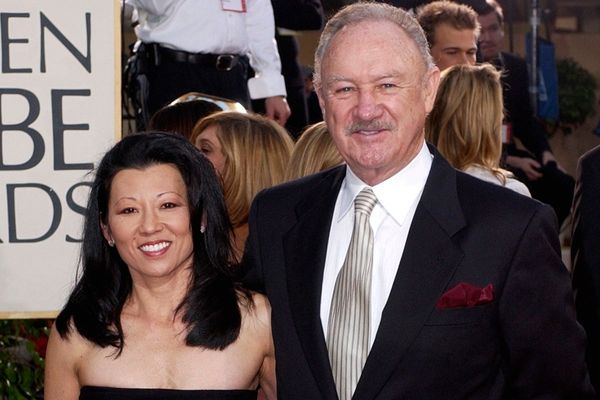
Further, the higher, the better. This shows how the airline’s fleet is growing. And even if an airline is giving up some of its planes, it is doing so because these are old or the lease periods are over and thus being replaced with new ones. These lists between January 2020 (roughly three months before the covid-19 pandemic grounded the sector) and September 2021 (the last date for which this data is available) contain three stories of advances and retreats.

The first story is of calculated advances in a turbulent market: IndiGo (net addition of 35 aircraft) and Vistara (net addition of 12). The second story is of conservatism: AirAsia (net addition of 5) and Go First (net addition of 1). The third story is of booking losses today to fight another day: SpiceJet (net loss of 9 planes) and Air India (net loss of 17 planes).
Embedded in these moves are the contours of the two axis that are poised to slug it out and shape the next phase of Indian aviation. In one corner is market leader IndiGo, which strengthened its relative position in the sector during the pandemic. In the second corner is the Tata Group, which in just eight years has built controlling interests in four Indian airlines: Vistara, Air India, Air India Express and AirAsia. Between them, IndiGo and Tatas control about four-fifths of India’s domestic passenger segment and about one-third of its international segment.
Today, both IndiGo and the Tatas are putting in place blocks intended to serve them well once the sector recovers from the covid-19 pandemic, which hurt demand, and now the Russia-Ukraine war, which is hurting their costing. Each is adding planes, right-sizing, appointing new chief executives and settling old issues. In the medium to long run, India remains an aviation market that IndiGo promoter Rahul Bhatia recently described as “the last bastion of ginormous growth globally". When the cycle turns, they want to be able to ride it.
Growth and profitability
They are all trying to crack a sector that remains elusive. A recent research report by airline consultancy CAPA-Centre for Aviation quotes a JP Morgan report to put this quixotic pursuit into context. It says airlines are “deeply serial value destroyers in the long term, to be owned only in the up-cycle. The network airline industry’s long-term profitability is fundamentally flawed."
The CAPA report elaborates on this. It says: “The ‘traditional’ airlines, or flag carriers, are supported by governments to a greater or lesser extent—if only by the inherent protectionism in the regulatory structure. By contrast, the more recent low-cost models are mostly independent and unsupported, having to crash through barriers to grow. Yet all perpetuate the myth that they can operate profitably."
A key variable in this equation is fuel costs, where airlines are basically at the mercy of crude oil prices. For example, in the March 2021 quarter, fuel accounted for 25% of IndiGo’s total expenses. During this quarter, the price of brent crude ranged from $50-70 per barrel. A year on, in the March 2022 quarter, it surged and ranged between $78 and $133. For IndiGo, the share of fuel in total costs shot up from 25% to 33%, worsening its profitability.
Profits aside, for Indian airlines, growth is expected to be on their side in the long run. In a research report, leading commercial aircraft manufacturer Airbus projected passenger growth for 143 geographical units and combinations, globally, in both the domestic and international segments. It projected traffic flows within the Indian sub-continent—principally the Indian domestic market—to grow the fastest between 2019 and 2040, at a compounded annual 7%.
At present, India is the world’s third-largest domestic market, according to global airline grouping International Air Transport Association (IATA). In March 2022, India domestic travel accounted for 2.2% of the world’s total revenue passenger kilometers. But it’s not a patch on US domestic (25.6%) and China domestic (17.8%). Thus, while India presents a strong opportunity to grow, it’s on a significantly smaller base than US and China.
Pandemic upheavals
Also, while the pandemic was bad enough, every domestic airline of significance faced internal realignments during that period. Market leader IndiGo saw its two lead promoters fall out over governance issues, ultimately leading to one of them agreeing to take a back seat and reduce his stake over five years.
The government finally privatized Air India and its low-cost arm Air India Express. Their sale to the Tata Group can improve utilization of their aviation assets like aircraft, bilateral flying rights and airport slots. Then, Go First had to change its name from Go Air, reportedly due to a potential trademark dispute with its promoters. It also filed to go public and raise ₹3,600 crore in May 2021, but that issue is yet to happen. Funds are something SpiceJet, too, is in dire need of, having slipped from a clear number two in domestic passengers to a middle runner; it has, however, crafted a successful diversification into cargo.
These airlines also have to deal with a new airline. Akasa, promoted by reputed investor Rakesh Jhujhunwala, is likely to take to the skies in July and is targeting a fleet of 18 planes by March 2023. And even Jet Airways is trying hard to settle its bankruptcy proceedings and fly again.
Flying to the Future
The big moves that will shape the sector are coming from IndiGo and the Tatas. During the pandemic, IndiGo increased its domestic share at the expense of Air India, SpiceJet and Go First. Its domestic share in the latest quarter was 53.9%. But also, the Tata-controlled airlines have a combined share of 24.5%, and it’s for the first time that IndiGo will square up against a challenger with strong intent and deep pockets.
IndiGo is a rare airline in the world to have a healthy record of profits. Those reserves help it weather adversity better. In May 2022, IndiGo was ranked eighth among all world airlines in terms of number of flights, according to travel data provider OAG. Further, it was the only airline among the eight to increase flight frequency over the pre-pandemic month of May 2019.
Even as it continues its domestic march, IndiGo is prepping for a larger international play. That international ambition is cited as one reason for its choice of Pieter Elbers as its next CEO. Elbers is a 30-year veteran of Dutch airlines KLM who rose up to become its CEO. In 2019-20, the last regular year before the pandemic broke, the international segment accounted for only 18% of IndiGo’s revenues. But IndiGo’s international revenues have since grown 70% and domestic 18%.
While IndiGo makes it moves from the position of an established leader, the Tatas’ recent actions pivot around the objective of bringing greater order to a diverse house. The Tatas may merge its airlines to create a player of might. In the past month, it has approached India’s competition regulator for approval to merge AirAsia with Air India. It has kicked off a voluntary retirement scheme to trim Air India’s bloated workforce. It has moved senior Vistara executives in key functions like network planning, IT and inflight services to Air India.
Like IndiGo, Air India’s next CEO is also an expat: Campbell Wilson, former CEO of Singapore Airlines’ low-cost arm Scoot. In 2019-20, the international segment accounted for 35% of Air India’s revenues. Air India has good international assets like route rights and airport slots, and its objective would be to sweat them more. And though it has been giving up planes, this should be seen as a move to right-size its fleet, especially in its new context, where it is part of a bouquet of four airlines. How IndiGo and Tatas shape up will decide the next phase of Indian aviation.
Four Phases of Aviation
The Indian aviation sector, in its short history of re-allowing private airlines, is littered with stories of giant ambition and spectacular failure. This journey can be broken into four phases. The first phase started in 1991. As part of liberalization of the economy, aviation was reopened to the private sector. New entrants included Jet Airways, Damania, East-West, ModiLuft and Air Sahara. Although aviation expanded, it remained a premium service, which limited market expansion.
The entry of Air Deccan in 2003 changed that, and defined the second phase. India’s first low-cost airline got down to changing the premium nature of air travel by getting rid of value-adds like food and business class. It forced other airlines to offer a low-cost play. This expanded the market, with annual domestic passengers tripling in the six-year period between 2002-03 and 2007-08.
But airlines also competed relentlessly on price, and dragged each other to losses. The third phase between 2007 and 2019 was one of consolidation. First, two major low-cost airlines were bought out by full-service ones: Air Deccan by Kingfisher and Air Sahara by Jet Airways. In time, both buyers went bankrupt. Amid all this, IndiGo showed how to ace the low-cost model and run an airline in India profitably. It also shaped an expansion of the overall market, which tripled in the 11-year period between 2009-10 and 2019-20.
The outbreak of the covid-19 pandemic in March 2020, which led to a full shutdown followed by a gradual opening, marked the fourth phase. As a recovery gathers steam, though under the cloud of high fuel prices, the fifth phase of Indian aviation, post liberalization, waits.
Flight 5.0
In an April 2022 report titled Airlines in Transition, CAPA listed major trends likely to shape global aviation in a post-pandemic world. One, it reckons that business travel—a key segment for airlines—will be slow to recover, and will make the full-service, long-haul model unserviceable. Two, narrow-body planes with greater fuel efficiency will shape point-to-point operations. Their greater fuel efficiency means they can do 5-8 hour distances. Their narrow body means they can fly to more airports. IndiGo is said to be looking at the A321XLR, a narrow-body aircraft launched last month, to widen its international reach.
Three, the low-cost model will be the “model for the times". According to the report, globally, the share of low-cost capacity in total operations has increased from 27.5% in 2011 to 35% in 2020. Four, with incumbents weighed down by the pandemic, conditions are suited for new entrants with financial muscle to launch. Between early-2020 and mid-2021, as many as 46 new airlines started up, it adds. India, too, has one in the form of Akasa. But can it match up to the muscle of IndiGo and the Tatas?
(howindialives.com is a search engine for public data.)







